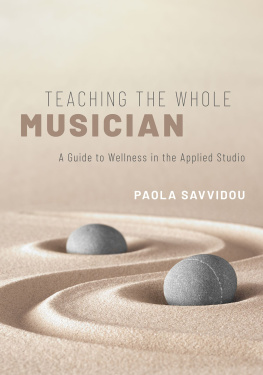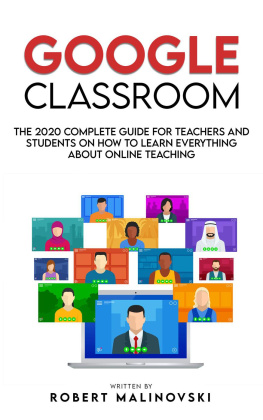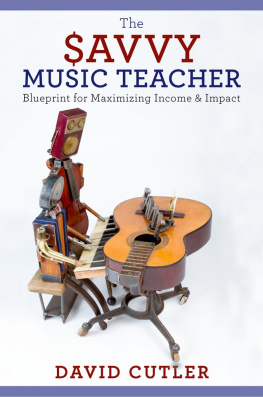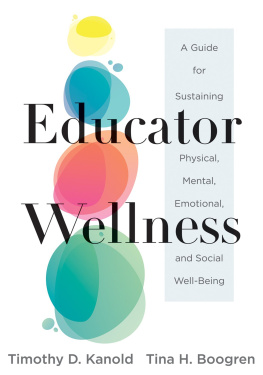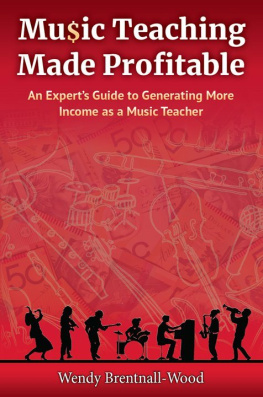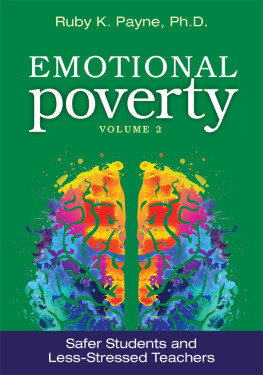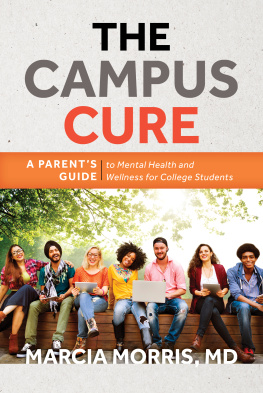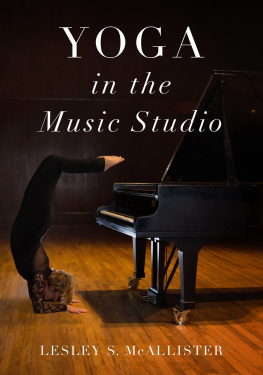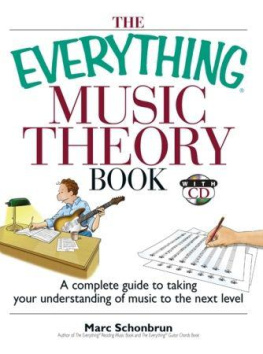Teaching the Whole Musician

Oxford University Press is a department of the University of Oxford. It furthers the Universitys objective of excellence in research, scholarship, and education by publishing worldwide. Oxford is a registered trade mark of Oxford University Press in the UK and certain other countries.
Published in the United States of America by Oxford University Press
198 Madison Avenue, New York, NY 10016, United States of America.
Oxford University Press 2021
All rights reserved. No part of this publication may be reproduced, stored in a retrieval system, or transmitted, in any form or by any means, without the prior permission in writing of Oxford University Press, or as expressly permitted by law, by license, or under terms agreed with the appropriate reproduction rights organization. Inquiries concerning reproduction outside the scope of the above should be sent to the Rights Department, Oxford University Press, at the address above.
You must not circulate this work in any other form and you must impose this same condition on any acquirer.
Library of Congress Cataloging-in-Publication Data
Names: Savvidou, Paola, author.
Title: Teaching the whole musician : a guide to wellness in the applied studio / Paola Savvidou.
Description: New York : Oxford University Press, 2021. | Includes bibliographical references and index.
Identifiers: LCCN 2020048704 (print) | LCCN 2020048705 (ebook) |
ISBN 9780190868796 (hardback) | ISBN 9780190868802 (paperback) |
ISBN 9780190868826 (epub) Subjects: LCSH: MusiciansHealth and hygiene. |
MusiciansWounds and injuries. | Overuse injuriesPrevention.
Classification: LCC ML3820 .S28 2021 (print) | LCC ML3820 (ebook) |
DDC 780.71dc23
LC record available at https://lccn.loc.gov/2020048704
LC ebook record available at https://lccn.loc.gov/2020048705
DOI: 10.1093/oso/9780190868796.001.0001
Contents
Over the past fifteen years of teaching I have learned that my rigorous training and preparation for the profession of a pedagogue desperately needed augmentation in several other dimensions that I never thought relevant to the work of teaching piano. I found myself in situations where I had to encourage a perfectionist six-year-old who lay on the bench for the entire lesson because she was so hard on herself for the wrong notes she played, or comfort a college student who cried every week due to tendinitis pain and the fear that her career was over. And then I listened and gently empathized with the retiree who couldnt bear the loneliness in his apartment and described how piano was the only thing in his life that kept him going.
The process of learning music can bring enormous joy and also deep struggle as we face our own personal insecurities, often exacerbated by an internal voice of judgment. That competitive drive to reach higher levels of achievement can also lead students to over-practicing, injury, and other unhelpful habits. In the lesson, vulnerabilities must be met with love in a trusting and safe environment. We must realize that, as teachers, we are more than transmitters of technical and artistic skill. Music teachers have the capacity to be lifelong mentorsrole models with the power to support and nurture a holistic vision for a life in the arts. And when we hold our students in that space of caring attention and acceptance, they will be better situated to thrive, shining brighter into their future.
Writing a book is much like raising a child. It takes the support of many individuals who contribute in different ways: loving encouragement, curious questioning, and professional advice. Through every step of this process I have relied heavily on a remarkable network of family, friends, colleagues, mentors, and healthcare professionals for their insight, expert advice, and honest feedback. I feel incredibly fortunate to work in an institution with a team of medical colleagues who dont even think twice about spending their time and energy answering questions and pointing me to the right resources. My deepest gratitude especially to Kristen Schuyten, Lexie-Muir Pappas, Allie Heckman, Bruce Edwards, Elizabeth Baldner, Marsha Benz, and Lisa Camfield. A huge Namaste to my favorite yogini, Catherine Matuza, for reviewing the sections on yoga and for generously serving as the model for the companion website videos. And thank you to my illustrator, Amber Huo, for the beautiful images.
One of my favorite parts of this process was connecting with students, faculty, and medical professionals through interviews. Your insights have opened my eyes to more perspectives and raised even more questions to explore in the future. While I wish to keep students and faculty names anonymous for confidentiality reasons, I would like to publicly thank Dr. Jeremy Stanek and Evan Engelstadt for their expertise on physical health and nutrition, respectively. I was able to develop these ideas in large part due to my position at the University of Michigan. I am grateful for the encouragement and support of my former and current supervisors.
Within piano pedagogy (my field of training), I continue to be inspired by brilliant colleagues who pave the way to new and exciting research in wellness: Vanessa Cornett, Jessica Johnson, Lesley Sisterhen-McAllister, and Brenda Wristen. Wellness for the performing artist would not have become a recognized field if it werent for the pioneering work of people like Gail Berenson, Linda Cockey, Gerald Klickstein, and Judy Palac. I was inspired to view wellness from a mentorship perspective due to my own deeply impactful mentors: Jessica Johnson and John Salmon. They saw me not just as a student or a pianist, but as a human being, with equal doses of talents and struggles.
My friends and family were an enormous source of strengthlifting me up when I felt defeated and reminding me that I can only tackle one thing at a time (my mantra that my sister Dina ingrained into me since freshman year of college). Thank you, Amy, Alex, Chris, and Olivia, for proofreading parts of the book and reminding me that simplicity is more powerful than convoluted wordiness.
People tell me I have inherited my mothers strength and my fathers determination. So, thank you, mom and dad for passing those traits down to me, without which I wouldnt have been able to finish this project. The pride of my sisters, Dina, Margarita, and Chrysso, in my work has kept me motivated. Their passion and creativity in their work has energized me in my own process. My in-laws loving support eased my moments of self-doubt. Thank you, Nancy and Johannes.
None of my work would be possible without the support of my husband Jonathan. And I am not just referring to the daily emotional encouragement and endless supply of dark chocolate, but the willingness to stay up until 2:00 a.m. night after night proofreading chapters of this book, followed by early wake-up calls by our darling little Oliver, so that I could continue editing. All this during the toughest year of our lives (2020Im sure many readers will relate). Thank you for your endless faith in me, love, and healthy dose of critical feedback.
Finally, thank you to Normal Hirschy of Oxford University Press for giving me this remarkable opportunity to write a book on the topic I am most passionate about, and to the rest of the team for seeing this project to fruition.
www.oup.com/us/teachingthewholemusician

